You can contact LEARNZ, part of CORE Education, at:
Postal Address:
PO Box 13 678,
Christchurch 8141,
New Zealand
Kia ora koutou
It has been an enjoyable and enlightening few days here in Te Pēwhairangi. Today the ambassadors and I were back in Russell/Kororāreka and once again the unpredictable Spring weather seemed to be playing nice!
Final web conference
First up this morning we had our final web conference for the week. The questions from our speaking school, Kohia Terrace, started some interesting discussion around conservation and how it relates to our past, present, and future.
Our expert, Ria Bright from Project Island Song, gave us much to think about from the discussion. A recording of all web conferences from the week are available on the web conferences page.
Changing environment
After the web conference we talked more with Ria about how the Bay of Islands has changed over time, particularly since the arrival of people. Like many places in Aotearoa, land use and development, introduced species, and the depletion of natural resources has caused our environment and native species to struggle. Here in the Bay of Islands there are other factors such as tourism that also have an impact.
Tuia 250 encourages us to reflect on our dual history, our first encounters, who we are today and our future together. And I think conservation and the environment have an important part to play in all of this. Much of our identity as New Zealanders is built on our relationship with elements and features of the land, air, and sea. So, if our actions directly impact the natural world, they also affect who we are as individuals, as communities, and as a nation.
Watch the video of my kōrero with Ria which shows images from the interactive map at Russell Museum. They help paint a picture of these ideas relating to people and the environment.
Save the environment, save ourselves
Not only do we rely on our natural world to help define us as people, we also need it for survival. Yes, humans have been the cause of environmental issues, but we can also be part of a change for good.
From the museum we took a short drive to Long Beach/Oneroa, just over the hill from Russell township. Here we had students from Te Kura o Waikare and Russell School take part in some dune restoration work. Getting involved in a conservation project is a wonderful way “give back” to our environment. You will see from the video that this type of mahi can also be enjoyable. And whatever part of the environment you are helping, you will get to learn about the valuable role it plays. It is a role that maintains a healthy habitat and keeps us healthy too.
Karakia to end
It was almost time to leave Russell and head back home to Kerikeri. Before doing so, I shared some last thoughts for the final video of the field trip. Then, our students performed a karakia to close the kaupapa. Make sure you watch the video – it’s a lovely karakia with actions to learn as a class.
Mā te wā and I hope to see you on another field trip soon,
Andrew
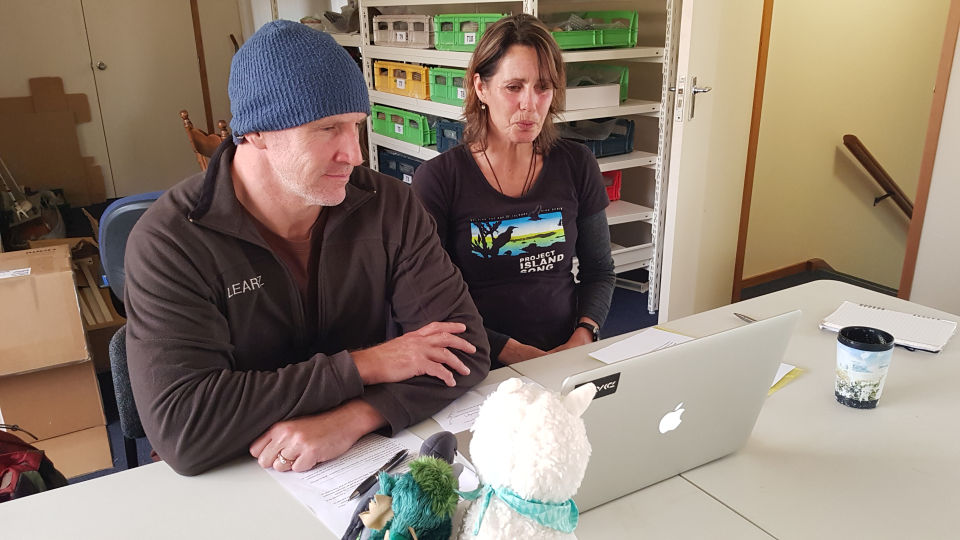
Andrew and the ambassadors with Ria from Project Island Song during this morning's web conference. Image: Shelley Hersey, LEARNZ.
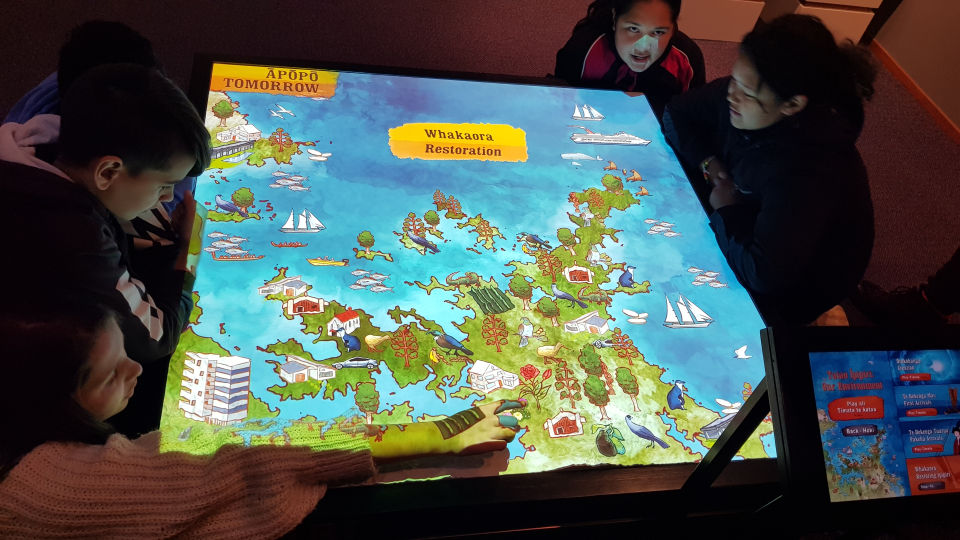
The interactive map at Russell Museum has been a valuable learning tool on the field trip this week. Image: Andrew Penny, LEARNZ.
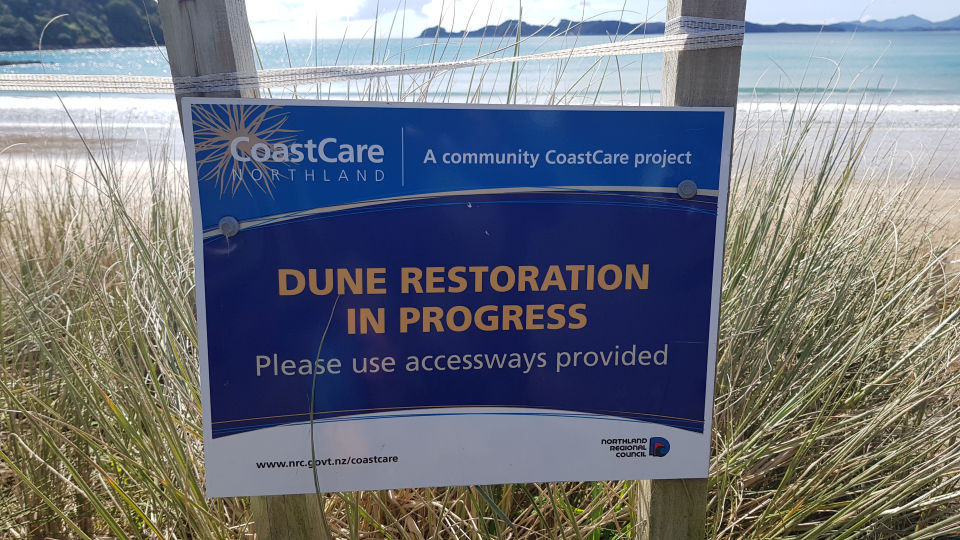
There are many conservation projects around Aotearoa that need volunteers. Have a look out for some near your place. Image: Andrew Penny, LEARNZ.
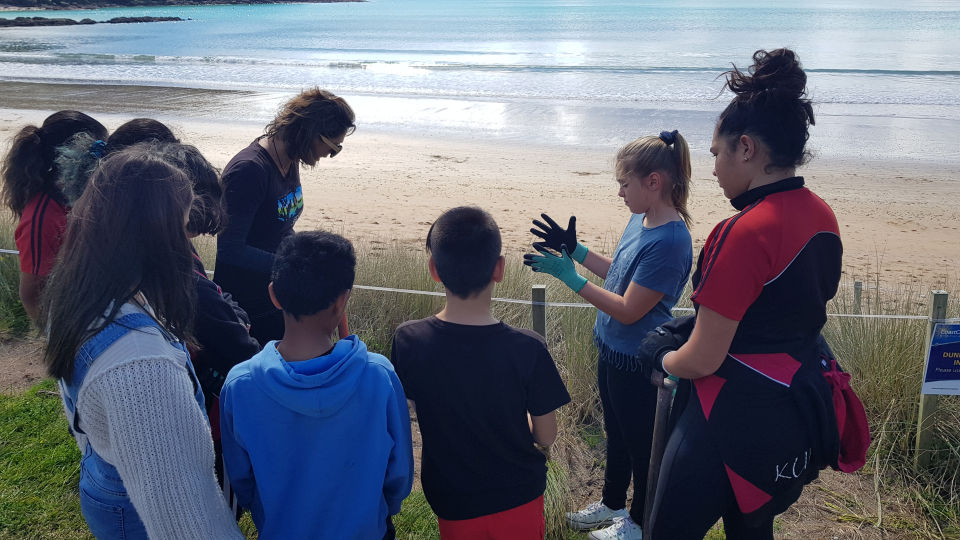
Ria goes over the dune planting process with students from Te Kura o Waikare and Russell School. Image: Andrew Penny, LEARNZ.
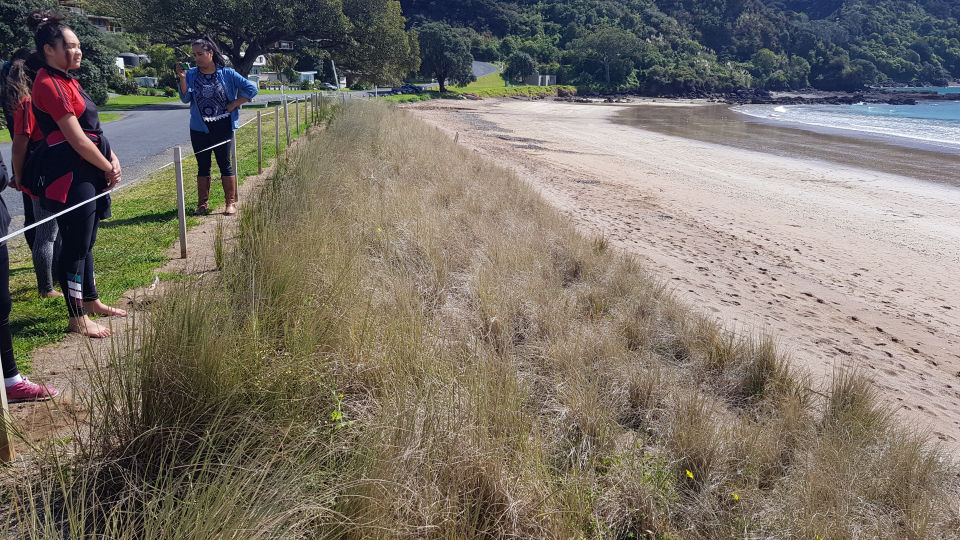
This dune restoration project has helped to stabilise the land here at Long Beach. It also looks a lot nicer than the kikuyu grass that was here before the restoration began. Image: Andrew Penny, LEARNZ.
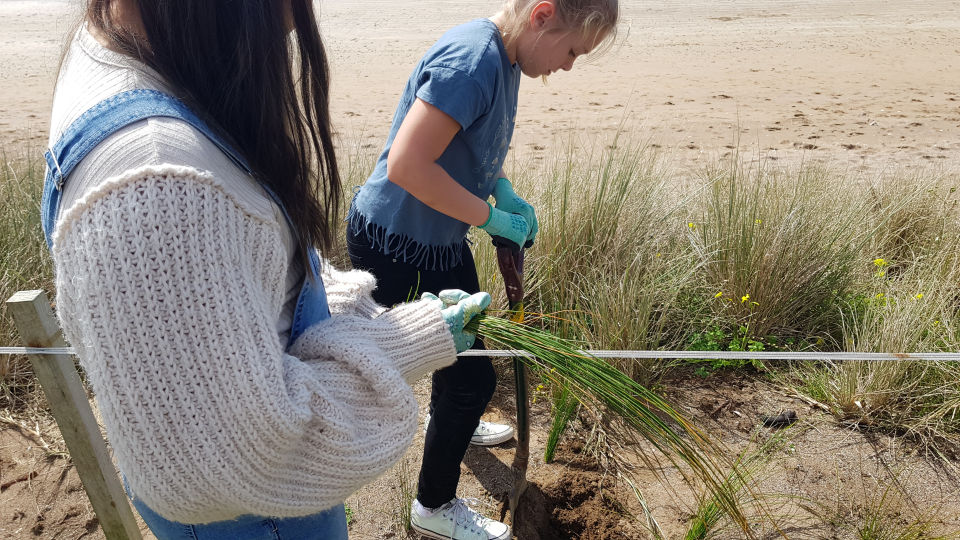
A lot of the dune plants here are spinifex/kōwharatanga. Today the students were planting oioi/jointed wire rush. Apart from stabilising the dunes, what other ways do plants like these help the environment? Image: Andrew Penny, LEARNZ.
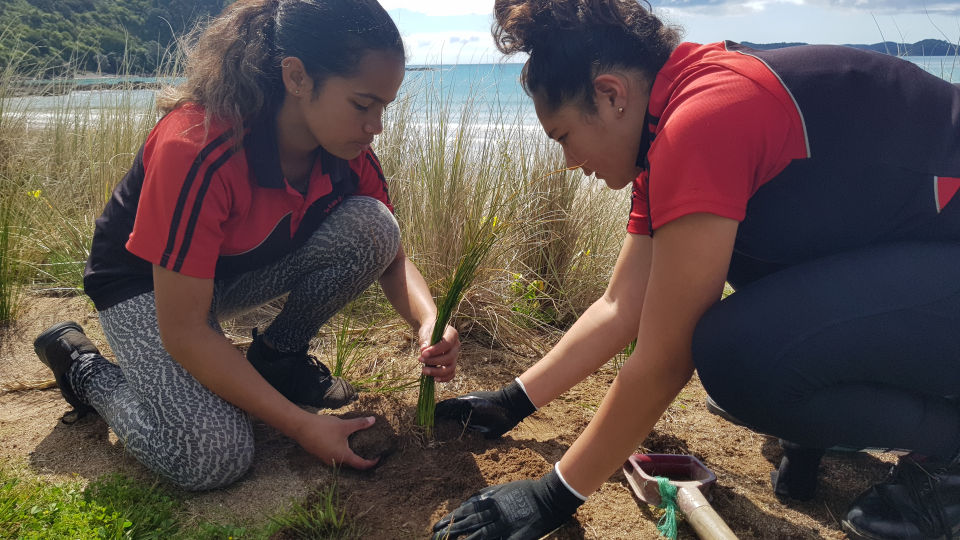
Two students from Te Kura o Waikare give their oioi plant a new home. How does restoration mahi benefit people? Image: Andrew Penny, LEARNZ.
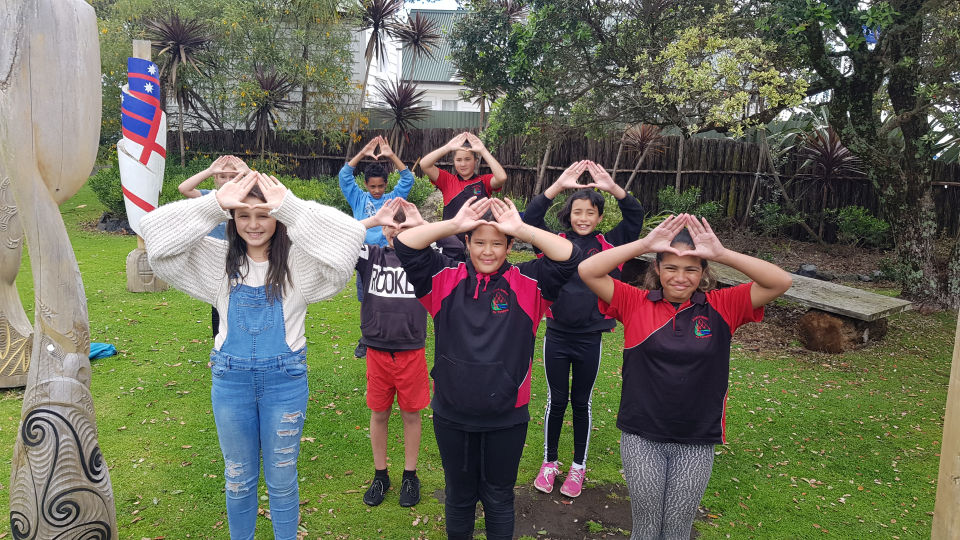
Te Kura o Waikare and Russell School students perform the field trip ending karakia with actions. You could watch the video and learn the words and actions too. Image: Andrew Penny, LEARNZ.